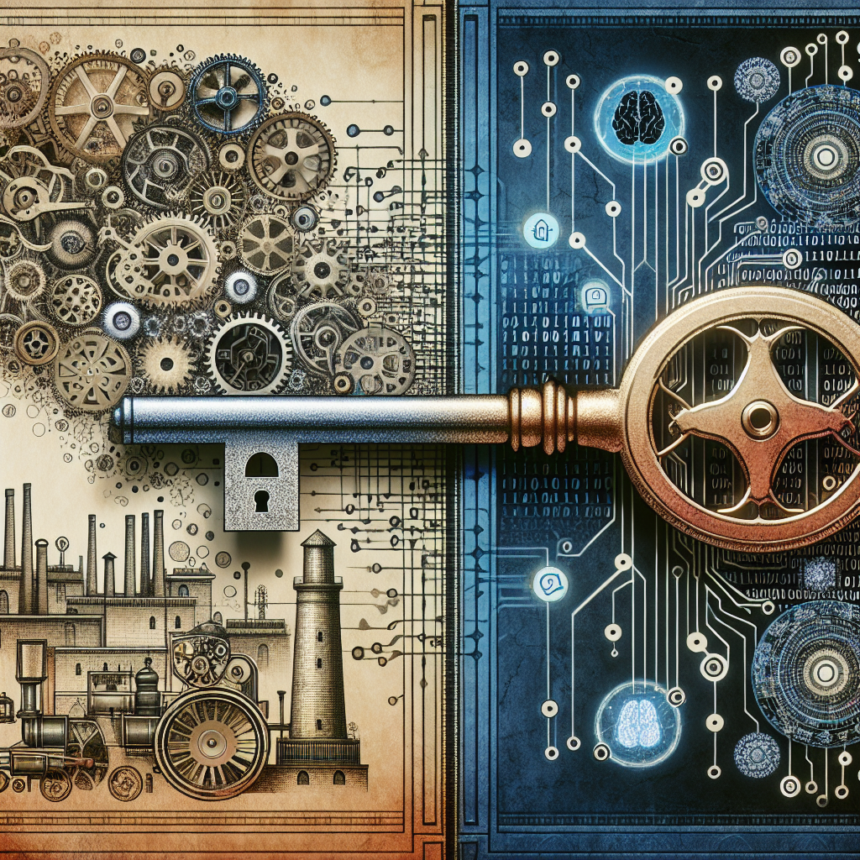The advent of Artificial Intelligence (AI) and Machine Learning (ML) is revolutionizing the way industries operate. From healthcare to finance, these technologies are not just optimizing processes but fundamentally changing the landscape of work environments and consumer interactions. The surge of data generated by digital interactions has provided fertile ground for the development of sophisticated algorithms that can analyze, predict, and automate actions in ways that were previously unimaginable. This article explores the transformative impact of AI and ML across various sectors, highlighting their potential to unlock new opportunities and efficiencies.
1. Healthcare: Precision Medicine and Predictive Analytics
In healthcare, AI and ML are being used to analyze vast amounts of data—ranging from electronic health records to genetic information—to provide personalized treatment plans tailored to individual patients. Predictive analytics allows healthcare providers to identify potential health issues before they arise, enabling early intervention and improving patient outcomes. For instance, ML algorithms can predict the likelihood of diseases like diabetes or heart conditions based on lifestyle and environmental factors, thus facilitating proactive healthcare measures.
2. Finance: Risk Assessment and Fraud Detection
The financial sector has embraced AI and ML to enhance decision-making processes, streamline operations, and bolster security. Machine learning algorithms analyze transaction patterns to detect anomalies that may signify fraud, significantly reducing response times to potential threats. Furthermore, AI is employed for credit scoring and risk assessment, using diverse data sources to provide a more holistic picture of a borrower’s creditworthiness. This not only increases accuracy but also creates a more inclusive financial ecosystem.
3. Retail: Personalized Shopping Experiences
In the retail industry, AI understands consumer behavior by analyzing purchase history, website interactions, and even social media activity. This understanding enables retailers to offer personalized recommendations, improving customer satisfaction and driving sales. By deploying chatbots powered by natural language processing, retailers provide 24/7 support, enhancing the shopping experience while reducing operational costs. Furthermore, AI-driven inventory management tools optimize stock levels, reducing waste and ensuring that popular products remain available.
4. Manufacturing: Smart Automation and Predictive Maintenance
Manufacturing processes are being transformed by AI and ML through smart automation. Robotics equipped with AI can manage complex assembly tasks with precision, efficiency, and minimal human intervention. Moreover, predictive maintenance powered by machine learning analyzes equipment data to forecast when machinery will fail or require maintenance, thereby minimizing downtime and optimizing production efficiency. This approach not only reduces operational costs but also extends the lifecycle of equipment.
5. Agriculture: Precision Farming
AI and ML technologies are paving the way for precision farming, enabling growers to leverage data analytics for better crop management. This includes using AI-driven tools to analyze soil health, weather patterns, and pest behavior. By integrating drones and IoT sensors, farmers can receive real-time data that informs planting decisions and resource allocation, leading to increased yield and reduced waste. With sustainable practices becoming increasingly vital, AI helps optimize the use of water and fertilizers, promoting environmental stewardship.
6. Transportation: Autonomous Vehicles and Intelligent Logistics
The transportation industry is witnessing a significant transformation through AI and ML technologies. Autonomous vehicles, powered by sophisticated algorithms, are beginning to reshape personal and commercial transportation. These vehicles predict traffic patterns and make real-time adjustments to optimize travel routes. In logistics, AI enhances supply chain efficiency by predicting demand fluctuations, optimizing routes, and reducing fuel consumption. This intelligent approach not only enhances service delivery but also reduces costs significantly.
Conclusion
The potential for AI and Machine Learning to transform industries is immense. As these technologies continue to evolve, they will unlock new avenues for innovation, efficiency, and productivity. While challenges such as data privacy, job displacement, and ethical considerations must be addressed, the trajectory points toward a future where AI and ML not only augment human capabilities but also create entirely new markets and opportunities.
As organizations harness the power of AI and ML, they must focus on integration, continuously revising strategies to stay ahead in an increasingly competitive landscape.
FAQs
Q1: What is the difference between Artificial Intelligence and Machine Learning?
A: Artificial Intelligence (AI) is a broader concept that refers to machines mimicking human intelligence, while Machine Learning (ML) is a subset of AI that focuses on the development of algorithms that enable machines to learn from and make predictions based on data.
Q2: How can small businesses benefit from AI and Machine Learning?
A: Small businesses can leverage AI and ML to improve customer service through chatbots, streamline operations by automating routine tasks, and utilize data analytics to gain insights into customer behavior, enhancing marketing strategies.
Q3: Are there any risks associated with AI and Machine Learning?
A: Yes, risks include data privacy concerns, potential job displacement due to automation, and ethical considerations in algorithm decision-making. Organizations must navigate these challenges responsibly.
Q4: What industries are most affected by AI and Machine Learning?
A: Almost every industry, including healthcare, finance, retail, manufacturing, agriculture, and transportation, is experiencing transformation due to AI and ML technologies.
Q5: How can I get started with AI and Machine Learning for my business?
A: Begin by identifying specific areas in your operations that could benefit from AI and ML. Collaborate with data scientists or technology partners, and invest in training for your team to build an AI-ready culture.
